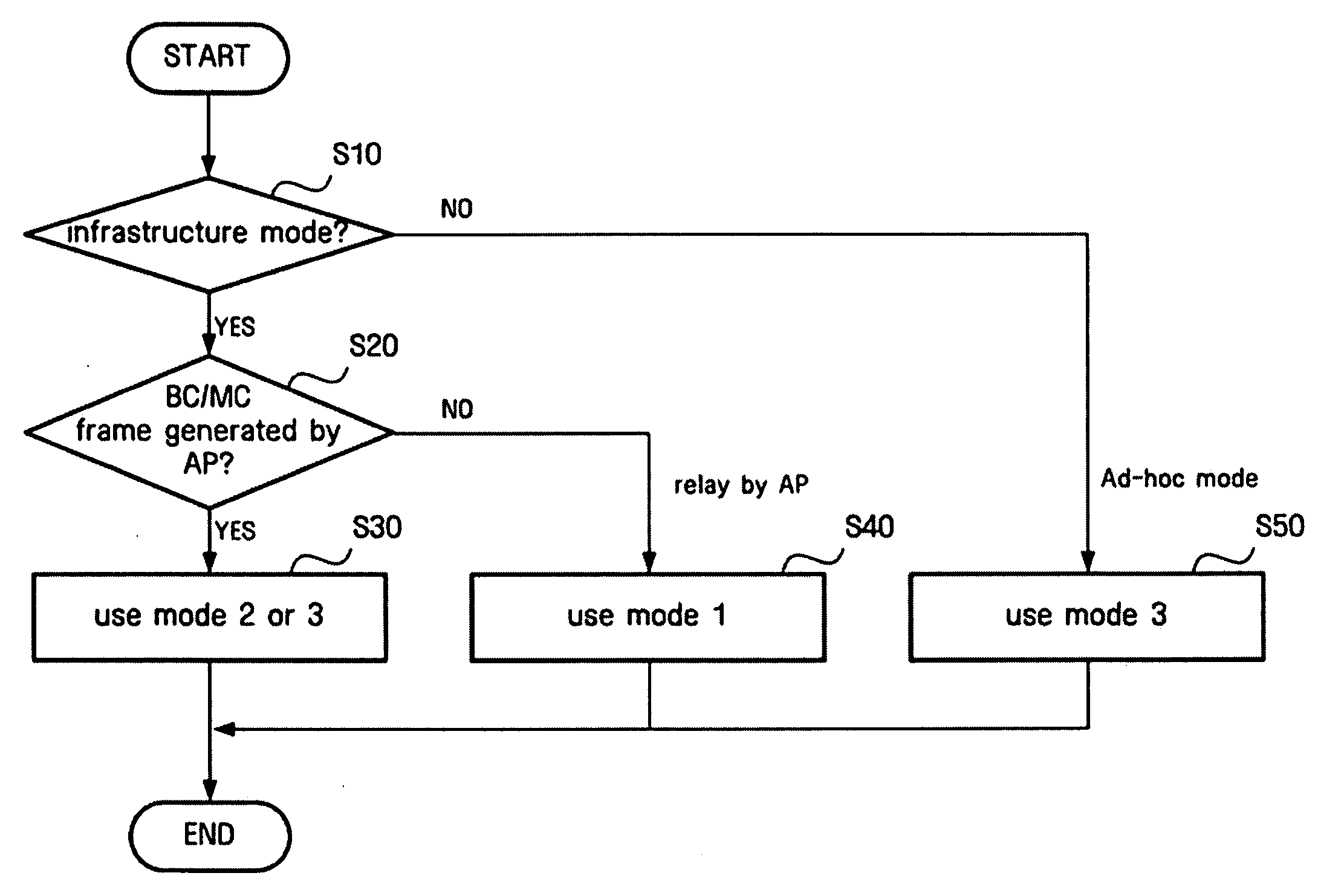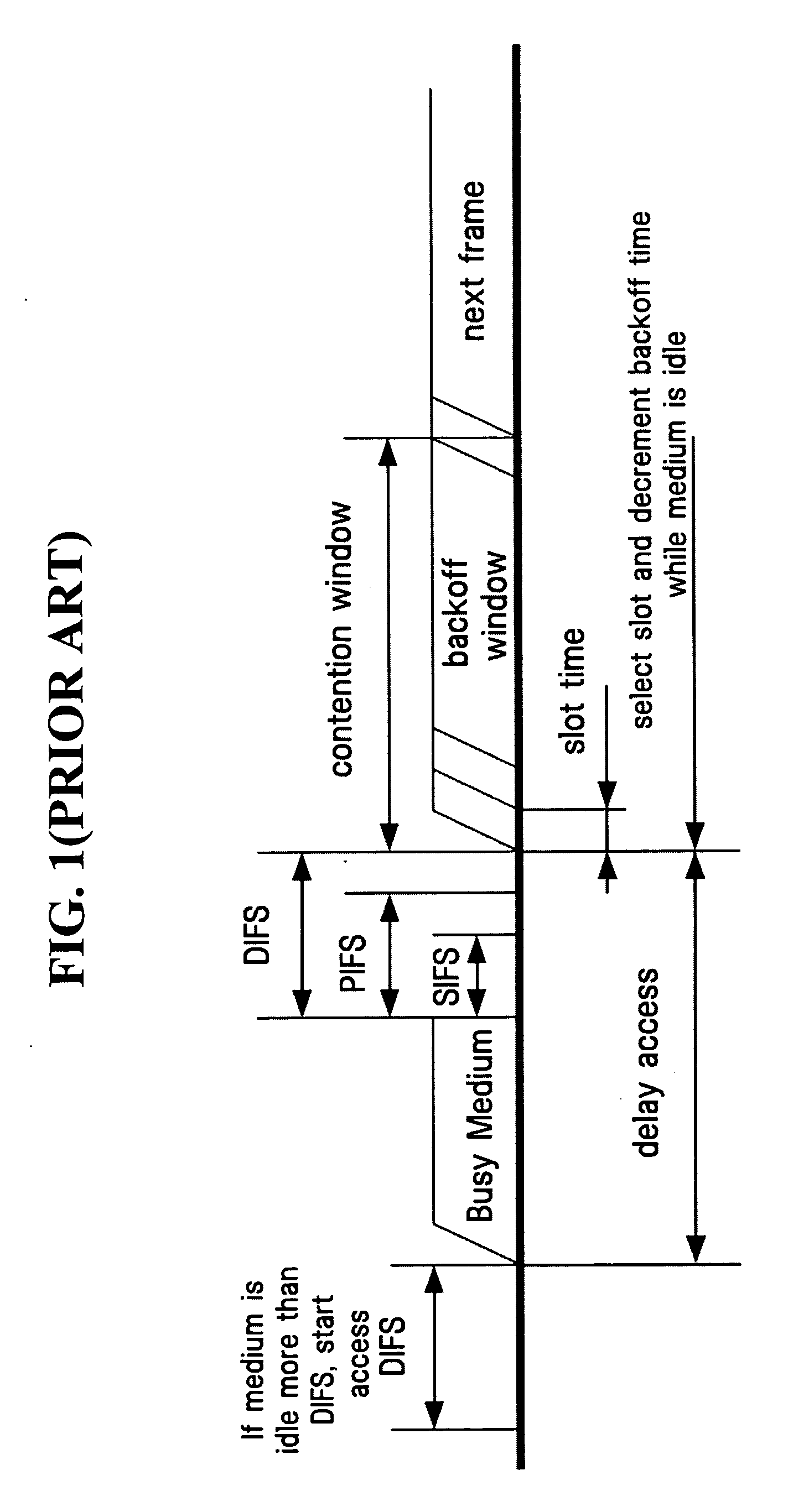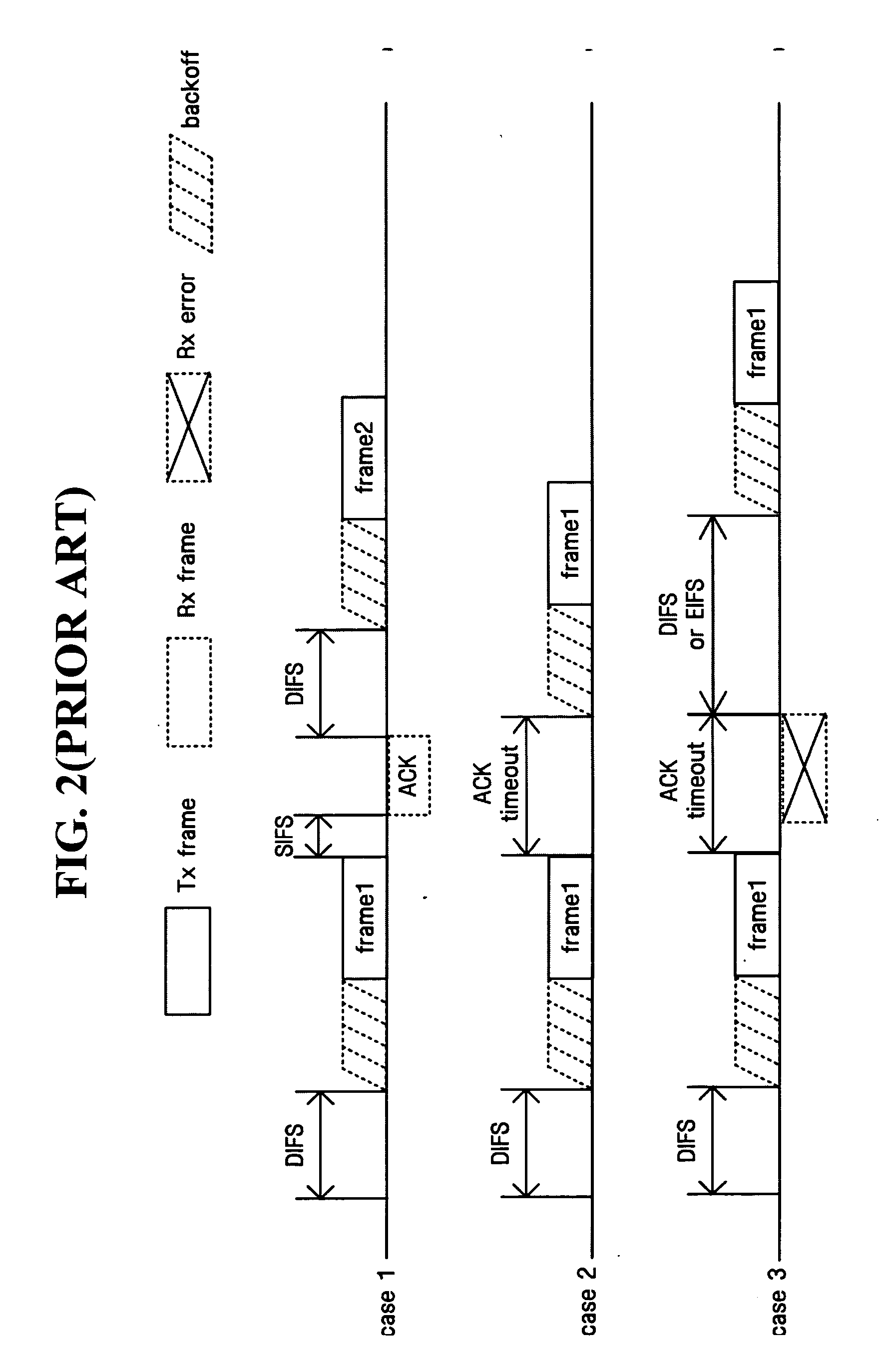Wireless communication method following DCF rule
a wireless communication and rule technology, applied in the field of efficiently transmitting data, can solve the problems of unavoidably degrading the overall system performance, no way to sense or recover from collision during data transmission, and bad frame reception, etc., and achieve the effect of enhancing reliability in the wireless network environmen
- Summary
- Abstract
- Description
- Claims
- Application Information
AI Technical Summary
Benefits of technology
Problems solved by technology
Method used
Image
Examples
Embodiment Construction
[0034] The present invention will now be described more fully with reference to the accompanying drawings, in which exemplary embodiments of the invention are shown. This invention may, however, be embodied in many different forms and should not be construed as being limited to the exemplary embodiments set forth herein. Rather, these exemplary embodiments are provided so that this disclosure will be thorough and complete, and will fully convey the concept of the invention to those skilled in the art. In the drawings, the same reference numerals represent the same elements.
[0035] Referring to FIG. 4, in mode 1, an access point (AP) 100 relays a frame received from a sending station. According to the conventional IEEE 802.11 standard, after the AP 100 has received a broadcast (BC) / multicast (MC) frame 20 and sent a corresponding ACK frame 10, a backoff algorithm must be performed after a Distributed Coordination Function Interframe Space (DIFS) interval to contend for a medium befor...
PUM
 Login to View More
Login to View More Abstract
Description
Claims
Application Information
 Login to View More
Login to View More - R&D
- Intellectual Property
- Life Sciences
- Materials
- Tech Scout
- Unparalleled Data Quality
- Higher Quality Content
- 60% Fewer Hallucinations
Browse by: Latest US Patents, China's latest patents, Technical Efficacy Thesaurus, Application Domain, Technology Topic, Popular Technical Reports.
© 2025 PatSnap. All rights reserved.Legal|Privacy policy|Modern Slavery Act Transparency Statement|Sitemap|About US| Contact US: help@patsnap.com



